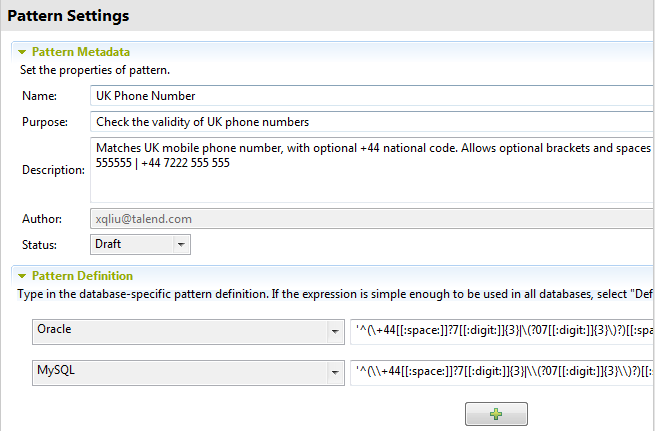Editing a regular expression or a SQL pattern
You can open the editor of any regular expression or SQL pattern to check its
settings and/or edit its definition in order to adapt it to a specific database type, or
adapt it to a specific use.
Before you begin
Procedure
Did this page help you?
If you find any issues with this page or its content – a typo, a missing step, or a technical error – let us know how we can improve!

